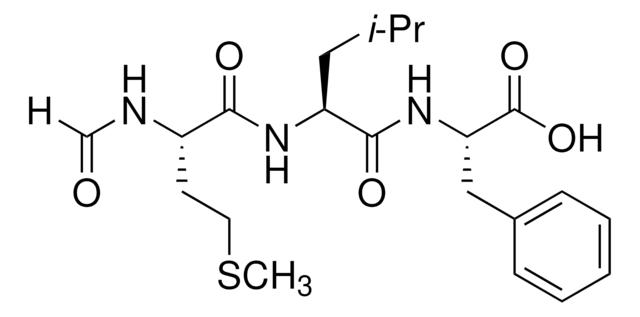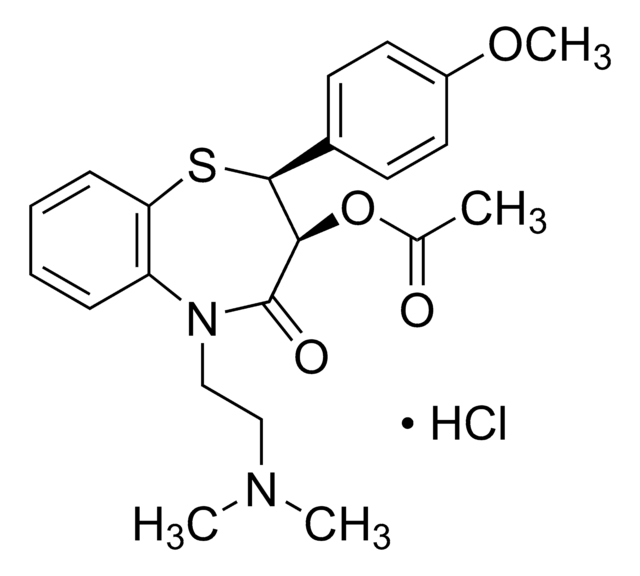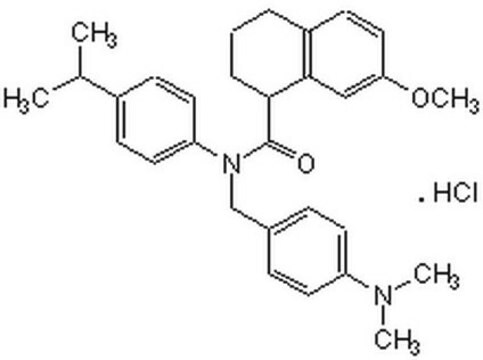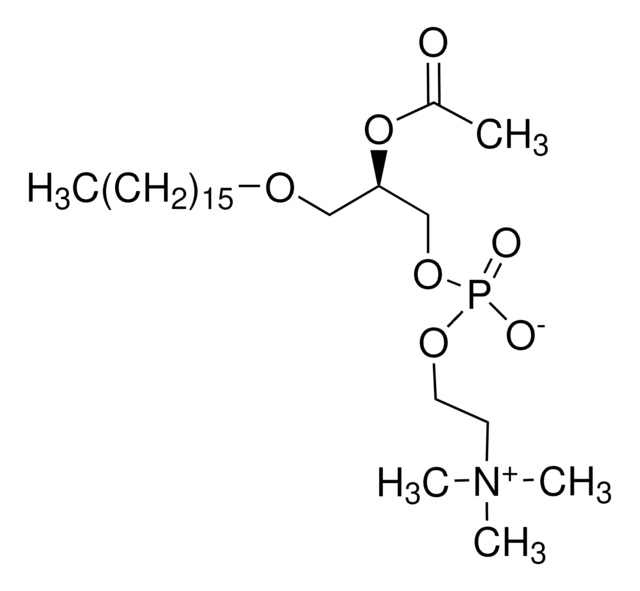Wichtige Dokumente
F3506
N-Formyl-Met-Leu-Phe
≥97% (HPLC)
Synonym(e):
Chemotaktisches Peptid, N-Formyl-L-methionyl-L-leucyl-L-phenylalanin, fMLP (misnomer but widely used)
About This Item
Empfohlene Produkte
Qualitätsniveau
Assay
≥97% (HPLC)
Form
powder
Mol-Gew.
437.55
Lagerbedingungen
(Keep container tightly closed in a dry and well-ventilated place)
Methode(n)
activity assay: suitable
Löslichkeit
acetic acid: 20 mg/mL, clear, colorless
Lagertemp.
−20°C
SMILES String
CSCC[C@H](NC=O)C(=O)N[C@@H](CC(C)C)C(=O)N[C@@H](Cc1ccccc1)C(O)=O
InChI
1S/C21H31N3O5S/c1-14(2)11-17(23-19(26)16(22-13-25)9-10-30-3)20(27)24-18(21(28)29)12-15-7-5-4-6-8-15/h4-8,13-14,16-18H,9-12H2,1-3H3,(H,22,25)(H,23,26)(H,24,27)(H,28,29)/t16-,17-,18-/m0/s1
InChIKey
PRQROPMIIGLWRP-BZSNNMDCSA-N
Angaben zum Gen
human ... FPR1(2357)
Suchen Sie nach ähnlichen Produkten? Aufrufen Leitfaden zum Produktvergleich
Amino Acid Sequence
Allgemeine Beschreibung
Forschungsbereich: Zellsignalisierung
Anwendung
- Erzeugen von Gradienten in Zigmond-Kammer-Chemotaxis-Assays, die an Neutrophilen durchgeführt werden
- Neutrophil-Chemotaxis-Assay
- Bestimmung der Beteiligung von MAPK-aktivierender Proteinkinase-2 (MAPKAPK-2) und/oder p38 am durch N-Formyl-Met-Leu-Phe stimulierten Signalweg der menschlichen polymorphonukleären Leukozyten (PMN).
Biochem./physiol. Wirkung
Antikörper
Ähnliches Produkt
Lagerklassenschlüssel
11 - Combustible Solids
WGK
WGK 3
Flammpunkt (°F)
Not applicable
Flammpunkt (°C)
Not applicable
Persönliche Schutzausrüstung
Eyeshields, Gloves, type N95 (US)
Analysenzertifikate (COA)
Suchen Sie nach Analysenzertifikate (COA), indem Sie die Lot-/Chargennummer des Produkts eingeben. Lot- und Chargennummern sind auf dem Produktetikett hinter den Wörtern ‘Lot’ oder ‘Batch’ (Lot oder Charge) zu finden.
Besitzen Sie dieses Produkt bereits?
In der Dokumentenbibliothek finden Sie die Dokumentation zu den Produkten, die Sie kürzlich erworben haben.
Kunden haben sich ebenfalls angesehen
Unser Team von Wissenschaftlern verfügt über Erfahrung in allen Forschungsbereichen einschließlich Life Science, Materialwissenschaften, chemischer Synthese, Chromatographie, Analytik und vielen mehr..
Setzen Sie sich mit dem technischen Dienst in Verbindung.










